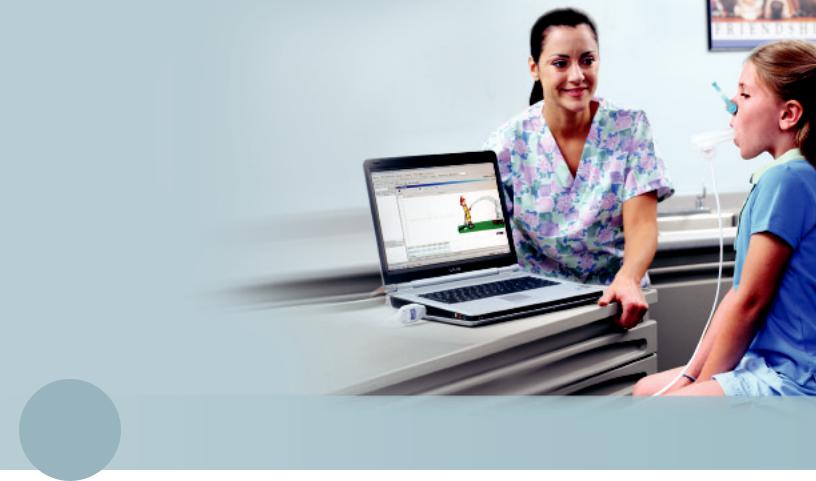Welch Allyn SpiroPerfect Spirometry Quick Start User Manual

S P I R O P E R F E C T
SPIROMETRY
Q U I C K S T A R T G U I D E

iSPIROPERFECT
PATIENT INFORMATION
What is spirometry?
Spirometry is the most basic and frequently performed test of pulmonary (lung) function. A device called a spirometer is used to measure how much air the lungs can hold and how well the respiratory system is able to move air into and out of the lungs. Because spirometry is based on a maximal forced exhalation, the accuracy of its results are highly dependent on your understanding, cooperation, and best efforts; therefore good coaching is essential.
Spirometry differs from peak flow readings in that spirometry records the entire forced breathing capacity against time, and peak flow records the largest breathing flow that can be sustained for 10 milliseconds. Both are often used in asthma care.
Why would I need a spirometry test?
This test is used to determine the cause of shortness of breath, to rule out any kind of obstructive disease that blocks breathing, or restrictive disease that limits the expansion and capacity of the lungs. Spirometry is most often used to diagnose and monitor lung problems, such as chronic bronchitis, emphysema, pulmonary fibrosis, chronic obstructive pulmonary disease (COPD), or asthma.
Spirometry is also used to monitor how well medications for respiratory problems are working and to evaluate breathing capability prior to surgery.
How is spirometry performed?
A spirometry test is done with a spirometer, which consists of a mouthpiece and disposable tubing connected to a machine that records the results and displays them on a graph. To perform spirometry, you must breathe through a flow transducer while performing certain breathing maneuvers like deep inhalation or forceful exhalation. Some of the test measurements are obtained
by normal breathing, and other tests require rapid and forceful inhalation and/or exhalation. The volume of air inhaled or exhaled, and the length of time each breath takes are recorded and analyzed.
Nose clips are usually used to make sure air is only coming out of the mouth. Sometimes a test will be repeated to get the best and maximum effort. Often, the tests are repeated after a person takes a medication that opens the airways of the lungs (a bronchodilator). A spirometry test can take anywhere from 5 minutes to a half an hour, depending on the different types of breathing tests being performed.
Are there risks associated with spirometry?
The risks are minimal for most people. Because the test
involves forced and rapid breathing, some people may experience temporary shortness of breath. Spirometry should not be done if a person suffers from chest pains, has had a recent heart attack, or has serious heart disease. There is a small risk of a collapsed lung in people with a certain type of lung disease.
How should I prepare for spirometry?
Do not eat a heavy meal before spirometry testing. Refrain from smoking for 4 to 6 hours before the test. Empty your bladder right before testing.
Specific instructions will be given if medications such as bronchodilators or inhalers need to be withheld before the test. Sometimes, medication may be inhaled prior to the test, to test how well an individual responds to medication.
